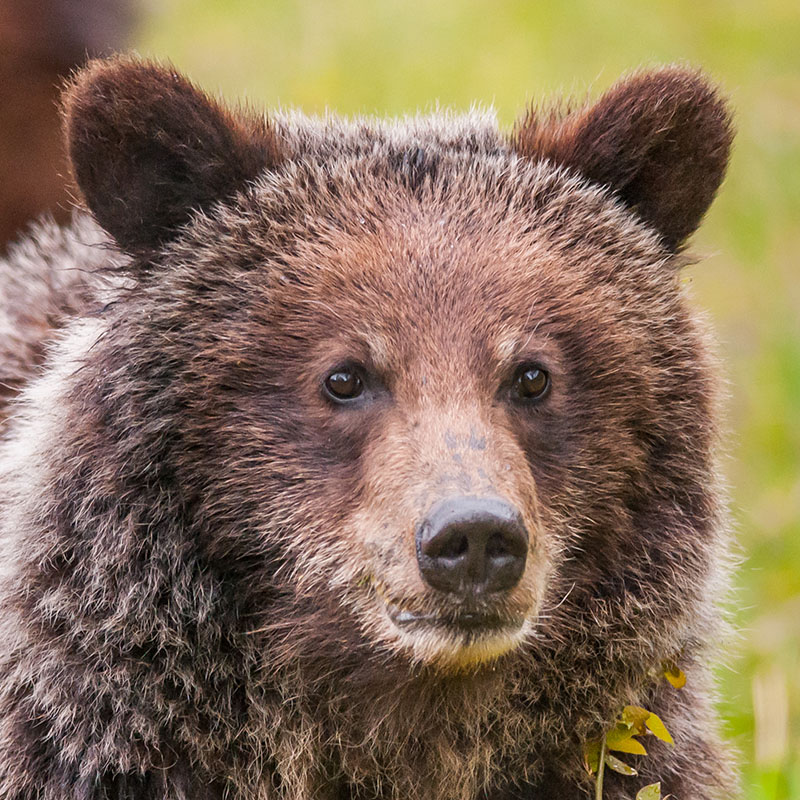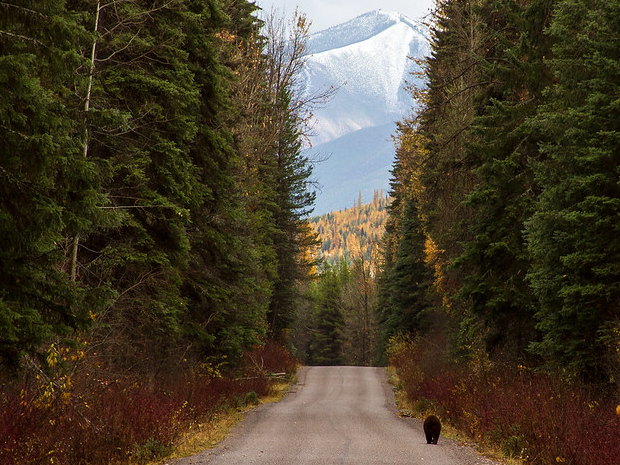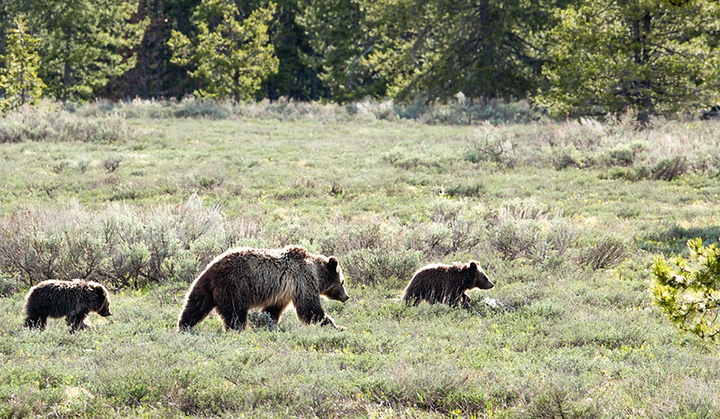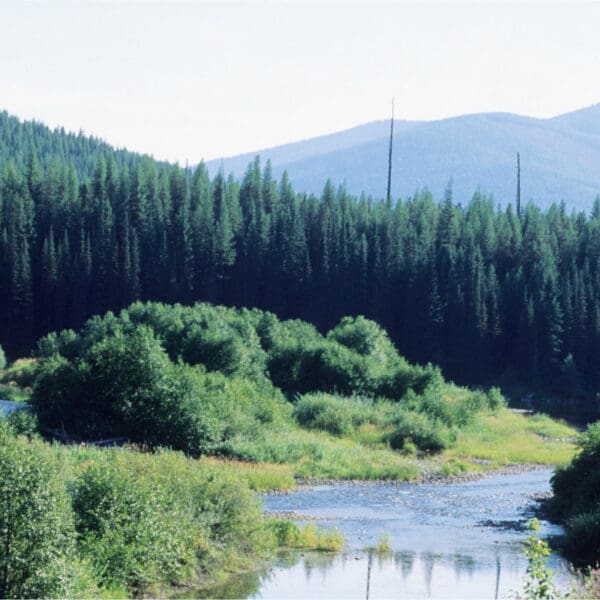Small successes that are a big deal for grizzly bear connectivity in Idaho and Montana
Have you ever noticed the bear silhouette that is part of Y2Y’s visual identity? Grizzly bears and their population health as a whole are a big part of Y2Y’s “why.”
Working closely with communities and partners in Canada and the U.S. to help grizzlies survive and thrive is one of the best parts of what we do — especially when we start to see that connectivity across this region is working.
After all, grizzly bears are known as an “umbrella species.” When grizzly bear populations are in tip-top shape, we know that other species nearby are likely doing well, too.
Diversifying the grizzly bear gene pool
When it comes down to why it’s important that grizzly bear habitat is connected and protected across borders, there’s one hugely important factor that is considered: genetic diversity of grizzly bear populations.
Wildlife like grizzly bears have enough natural barriers to deal with. But when wildlife habitats are crossed by human-created barriers like roads, train lines, towns, cities and borders, their habitats become even more broken up, or fragmented. This creates “islands” of habitat.
When bear populations lose their ability to connect with other bear populations, inbreeding ensues and their gene pools weaken.
This genetic isolation is also exacerbated by human-bear conflicts, often leading to the bear being killed or relocated. This is why doing our part to share space with wildlife is so important.
You can help protect yourself and bears by something as simple as carrying and knowing how to use bear spray.

Grizzly bears in Idaho’s Bitterroot landscape
Y2Y’s big-picture approach to conservation helps remedy genetic isolation and the loss of habitat. And guess what? It’s working!
Back in August 2019, we told you about the male grizzly bear that was new to central Idaho’s Bitterroot Wilderness region. This was fantastic news, considering bears hadn’t been seen in that area in quite some time — not since 1932 when the last grizzly bear was shot in the Selway-Bitterroot Ecosystem.
In April 2020, there was another report of a grizzly bear spotted in central Idaho. Tracks from a grizzly thought to be around four years old were confirmed near Grangeville, Idaho. The bear may have traveled several hundred miles through Idaho and Montana — likely through the Cabinet-Yaak and Nez Perce-Clearwater National Forest — without any known conflict with people. The Nez Perce-Clearwater forest was probably habitat for this bear.
Your comments on the Nez Perce forest plan helped highlight the importance of the Bitterroot Ecosystem and connecting grizzlies from north to south.
This second sighting (and possibly even a third!) is wonderful news, as Y2Y and its partners have long worked to recover the local grizzly population and improve wildlife corridors in northwest Montana and northern Idaho.
Y2Y’s big-picture approach to conservation helps remedy genetic isolation and the loss of habitat.
And guess what? It’s working!
This news makes the case for connectivity work in the U.S. That work includes Y2Y and our partners’ efforts to reduce barriers to wildlife movement through conflict reduction, improving safety on highways, working with willing landowners to conserve private land, and collaborating with communities that share space with grizzlies.
As part of our collaborative work in 2020, Y2Y has been facilitating a collaborative with the Nez Perce Tribe and community and conservation groups to ensure a connected landscape from the Blue Mountains in Oregon, through central Idaho, and to the Bitterroot Mountains at the Montana state line. The ‘Blues to Bitterroots’ program includes another critical partnership, ‘Camas to Condors’, that focuses on climate resilience and Native food security.
“Our work with the Nez Perce Tribe through the Blues to Bitterroots program is one-of-a-kind,” says Kim Trotter, Y2Y’s U.S. program director.
“The program takes a holistic approach to landscape conservation and management that brings western and Indigenous communities together to secure traditional food sources and ensure long-term climate resilience for these valuable ecosystems.”
Oh, the places grizzly bears will go
By connecting and protecting wildlife corridors from the U.S.-Canadian border into central Idaho and the Greater Yellowstone Ecosystem, grizzly bears may return to their historic ranges in central Idaho, and Yellowstone bears will be more genetically robust over the longer term.
At a time when the loss of species is so prevalent, this story of bringing bears back represents hope!

Just as these magnificent creatures are said to be a symbol of strength, vitality and resilience, your continued support gives our team and the many partners we work with the strength to push forward in keeping wildlife connected and protected, and the people who share space with them healthy and resilient.
Grizzly bears are showing us that connectivity matters, and our work to help them get where they need to go is working. You are closing the gaps between isolated grizzly bear populations where it’s needed most!



